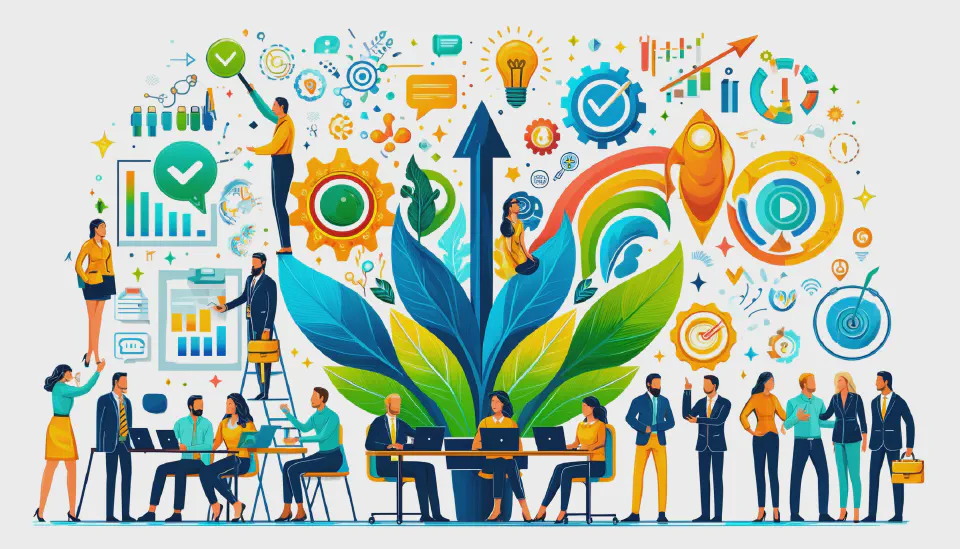
Employee Development and Growth
Employee development and growth is a crucial component of HR philosophies and principles that focuses on investing in the skills, knowledge, and capabilities of the workforce. It reflects the belief that employees are not just resources to be utilized, but valuable assets to be nurtured and developed over time. In this section, we will explore the concept of employee development and growth in depth, examining its various aspects, benefits, and best practices.
Definition and Scope
Employee development and growth refers to the ongoing process of enhancing employees’ skills, knowledge, and competencies to meet the evolving needs of the organization and support their career aspirations. It encompasses a wide range of activities, from formal training and education programs to informal learning experiences, mentoring, and coaching.
Some key aspects of employee development and growth include:
- Identifying individual strengths, weaknesses, and development needs
- Setting clear goals and expectations for learning and performance
- Providing access to relevant training, resources, and support
- Encouraging continuous learning and skill acquisition
- Offering opportunities for career advancement and mobility
- Fostering a culture of growth, innovation, and creativity
- Aligning individual development with organizational objectives and values
Importance and Benefits
Investing in employee development and growth is not just a nice-to-have – it is a strategic imperative for organizations that want to stay competitive and adapt to changing business environments. When employees have the skills, knowledge, and motivation to perform at their best, they can drive higher levels of productivity, quality, and customer satisfaction, leading to improved business outcomes.
Some specific benefits of employee development and growth include:
- Enhanced job performance and productivity
- Increased employee engagement, motivation, and loyalty
- Improved problem-solving, decision-making, and innovation
- Greater organizational agility and resilience in the face of change
- Stronger pipeline of future leaders and critical talent
- Reduced skills gaps and talent shortages
- Enhanced employer brand and reputation, attracting top talent
Link to HR Philosophies and Principles
Employee development and growth is a fundamental component of HR philosophies and principles, reflecting the belief that people are the most valuable asset of any organization. It is closely linked to other key aspects of HR philosophies, such as:
- Respect for employees: Investing in employee development shows that the organization values and respects its people, and is committed to their personal and professional growth.
- Performance management and recognition: Employee development is an integral part of effective performance management, providing the skills and support needed for employees to achieve their goals and be recognized for their contributions.
- Work-life balance and well-being: Employee development can help individuals manage stress, build resilience, and achieve a healthy work-life balance by providing them with the tools and resources to succeed both personally and professionally.
By embedding employee development and growth into their HR philosophies and principles, organizations can create a strong foundation for a highly skilled, engaged, and adaptable workforce.
Best Practices and Examples
To support employee development and growth, organizations can implement a range of best practices, such as:
- Conducting regular skill assessments and development planning sessions
- Offering a diverse range of learning and development programs, including online courses, workshops, conferences, and job rotations
- Providing mentoring and coaching opportunities, both internally and externally
- Encouraging cross-functional collaboration and knowledge sharing
- Implementing performance management systems that emphasize continuous feedback, goal-setting, and development
- Offering tuition reimbursement, professional certification, and other educational benefits
- Recognizing and rewarding employees for their learning and growth achievements
- Fostering a culture of experimentation, risk-taking, and learning from failure
Some examples of organizations that have successfully prioritized employee development and growth include:
- Amazon, which invests heavily in employee training and development, including its Career Choice program that pays up to 95% of tuition and fees for courses related to in-demand fields, even if they are not relevant to the employee’s current job.
- AT&T, which has transformed its workforce development approach to keep pace with the rapidly changing technology landscape. The company offers a wide range of online courses, nanodegree programs, and reskilling initiatives to help employees acquire new skills and adapt to emerging roles.
- Airbnb, which places a strong emphasis on employee growth and learning, with a dedicated “Employee Experience” team that designs and delivers a wide range of development programs. The company also encourages employees to pursue their passions and take on stretch assignments through its “Air Stretch” initiative.
Conclusion
Employee development and growth is a vital component of HR philosophies and principles that can have a profound impact on individual and organizational success. By investing in the skills, knowledge, and capabilities of their people, organizations can create a highly engaged, adaptable, and innovative workforce that can drive sustainable business growth. HR professionals play a key role in designing and implementing effective development programs, as well as fostering a culture of continuous learning and growth. By making employee development a strategic priority and a shared responsibility, organizations can unlock the full potential of their talent and build a strong foundation for long-term success.
HR Philosophies & Principles
- Understanding HR Philosophies
- Understanding HR Principles
- Key Components of HR Philosophies and Principles
- Respect for Employees
- Employee Development and Growth
- Diversity, Equity, and Inclusion
- Performance Management and Recognition
- Work-Life Balance and Employee Well-being
- Open Communication and Transparency
- Ethical Conduct and Social Responsibility
- Developing and Implementing HR Philosophies and Principles